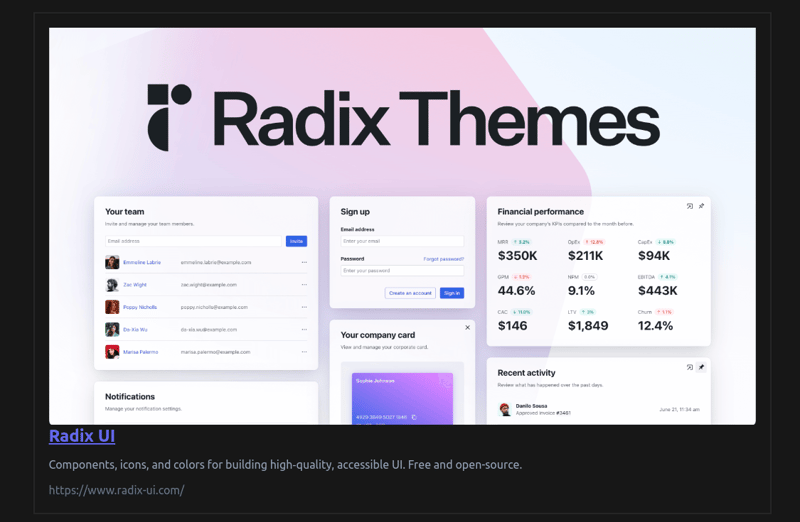Home >Web Front-end >JS Tutorial >How to embed link with preview in React Application
How to embed link with preview in React Application
- Mary-Kate OlsenOriginal
- 2024-10-13 20:25:031088browse
Introduction
When building a web application, it's often useful to show a preview of a link's content—like how social media platforms show link previews when you share a URL. So instead of just url text you can show og informations like pictures and desccription as well, beside url.
In this post, I'll walk you through embedding links in a React app, while fetching Open Graph metadata (such as title, image, and description) using axios and cheerio for scraping the target page's HTML.
We’ll create a simple EmbeddedLink component that fetches and displays Open Graph metadata for any provided URL.
Prerequisites
Before we start, make sure you have the following installed:
- React – Set up a React project using Create React App or any method you prefer.
- Axios – For making HTTP requests.
- Cheerio – For parsing and scraping HTML (a server-side jQuery-like library usually used for scraping).
You can install Axios and Cheerio using the following commands:
npm install axios cheerio
Step 1: Creating the EmbeddedLink Component
We'll create a new EmbeddedLink component that takes in a url as a prop and fetches the Open Graph metadata from that link which we will use later on. Here's the full code:
import React, { useState, useEffect } from 'react';
import axios from 'axios';
import cheerio from 'cheerio';
const EmbeddedLink = ({ url }) => {
const [loading, setLoading] = useState(true);
const [error, setError] = useState(null);
const [imageUrl, setImageUrl] = useState('');
const [title, setTitle] = useState('');
const [description, setDescription] = useState('');
useEffect(() => {
const fetchOGData = async () => {
try {
const response = await axios.get(url, {
headers: {
'origin': 'https://mysite.com'
}
});
const html = response.data;
// Parse HTML content using Cheerio
const $ = cheerio.load(html);
const ogImage = $('meta[property="og:image"]').attr('content');
const ogTitle = $('meta[property="og:title"]').attr('content');
const ogDesc = $('meta[property="og:description"]').attr('content');
setImageUrl(ogImage || '');
setTitle(ogTitle || '');
setDescription(ogDesc || '');
setLoading(false);
} catch (error) {
setError(error);
setLoading(false);
}
};
fetchOGData();
}, [url]);
if (loading) return <div>Loading...</div>;
if (error) return <div>Error: {error.message}</div>;
return (
<div className="embedded-link border-2 p-5 my-3 border-neutral-800">
{imageUrl && <img src={imageUrl} alt={title} className="cover-image max-w-50 w-auto h-auto" />}
<a href={url} target="_blank" rel="noopener noreferrer" className="text-indigo-500 underline font-bold text-2xl">
{title && <h3>{title}</h3>}
</a>
{!imageUrl && !title && <p>No preview available</p>}
<p className="my-3">{description}</p>
<p className="text-slate-500">{url}</p>
</div>
);
};
export default EmbeddedLink;
Step 2: Using the EmbeddedLink Component
You can now use the EmbeddedLink component in your React app like this:
import React from 'react';
import EmbeddedLink from './EmbeddedLink';
function App() {
return (
<div className="App">
<h1>Link Preview Example</h1>
<EmbeddedLink url="https://example.com" />
</div>
);
}
export default App;
This will render a preview of the URL provided, with its image, title, and description.
Handling Errors and Loading States
We handle potential errors and loading states by showing appropriate messages to the user:
- While the metadata is being fetched, a simple "Loading..." message is shown or you can use some animation spinner or whatever.
- If something goes wrong during the fetch (e.g., a network issue), the error message is displayed.
Conclusion
When you are done, you should be able to see result like on the picture below.

I prefer this dev.to embedded link style, but you can style it whatever you like and prefer.
The above is the detailed content of How to embed link with preview in React Application. For more information, please follow other related articles on the PHP Chinese website!
Related articles
See more- An in-depth analysis of the Bootstrap list group component
- Detailed explanation of JavaScript function currying
- Complete example of JS password generation and strength detection (with demo source code download)
- Angularjs integrates WeChat UI (weui)
- How to quickly switch between Traditional Chinese and Simplified Chinese with JavaScript and the trick for websites to support switching between Simplified and Traditional Chinese_javascript skills

